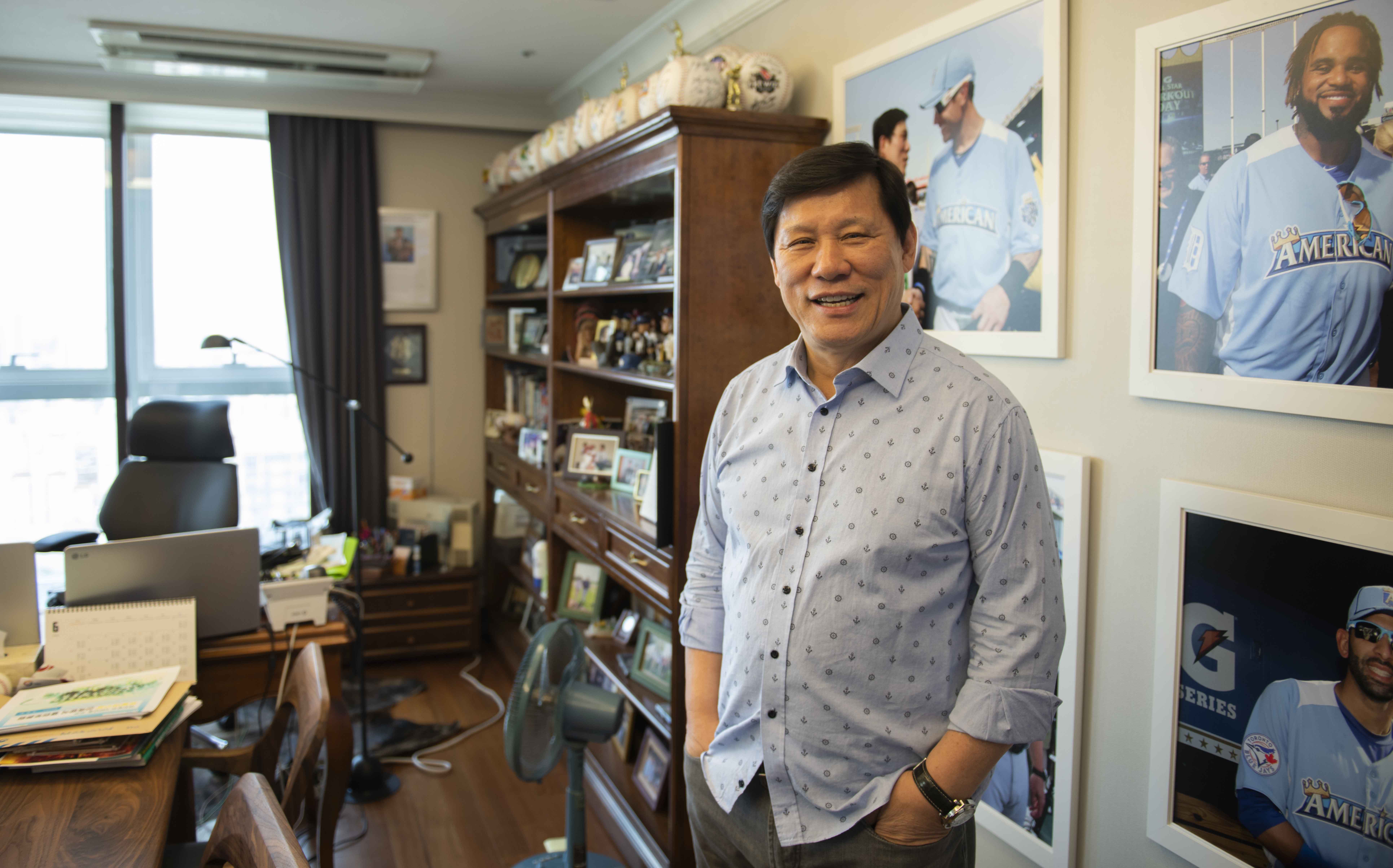
Heo Koo-Yeon in his office
Heo Koo-Yeon is one of the biggest names in Korean baseball history. At this moment, you could say that he is the most influential figure in the Korea Baseball Organization (KBO). Heo was originally an athlete. As a star high school player, he partook in international competitions in the pre-KBO era of Korean baseball. Starting 1982, the inaugural KBO season, he has been a commentator (with a brief detour to a managing job for the Chungbo Pintos in 1986). Outside of the broadcasting job, Heo’s contributed in speaking for the better overall infrastructure and facilities around KBO. He influenced the building of many of the newer KBO venues, which were built closer to the modern style rather than the old high-school style that classic venues adhered to. Most recently, he advised on the construction of the new NC Dinos venue, Changwon NC Park, which is said to be “major league quality” by many. Outside of KBO, he’s also donated close to $100,000 to build Cambodia’s first baseball stadium and helped build a ballpark in Vietman as well. As a baseball lifer who saw the growth of the sport in Korea, he has his vision set on continuing to build baseball in unfamiliar areas.
At 68 years old, Heo is still going strong as a commentator for the MBC while serving as an adviser to the commissioner for the KBO. I sat down in his office to talk about his relationship with MLB, the road to the advent of first Korean major leaguer, and the status of Korean amateur players wanting to sign with a major league club.
Beginning of the MLB – KBO relationship:
As a baseball lifer, Heo, like many others in Korea, was influenced by the Japanese idea of baseball from the time he was an athlete.
“Starting in 1968, as a high school player representing Korea, I’ve been back and forth to Japan a lot,” he recalled. “We knew that our baseball system, at the time, was quite Japan-based. Our leaders and managers were educated during the Japanese occupation era (1910-45).” In 1984, Heo had a chance to go to the United States, thanks to Los Angeles Dodgers owner Peter O’Malley.
“O’Malley emphasized the globalization of baseball and invited me.” Heo got to go to Vero Beach and Dodgertown for their spring training camp. It was the first time Heo got to see the major league players with his own eyes.
“That, in the big picture, changed and influenced my life,” Heo says. “It also influenced Korean baseball a lot. I would say it was the turning point of our nation’s baseball.” Read the rest of this entry »

![]() iTunes Feed (Please rate and review us!)
iTunes Feed (Please rate and review us!)![]() Sponsor Us on Patreon
Sponsor Us on Patreon![]() Facebook Group
Facebook Group![]() Effectively Wild Wiki
Effectively Wild Wiki![]() Twitter Account
Twitter Account![]() Get Our Merch!
Get Our Merch!![]() Email Us: podcast@fangraphs.com
Email Us: podcast@fangraphs.com
